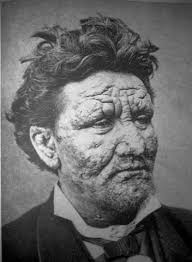HWN Jobs
- STATE PROGRAM ASSOCIATE (STATE PROGRAM OFFICERS) JOBS AT ASSOCIATION FOR REPRODU
- ARCHBISHOP VINING MEMORIAL CHURCH CATHEDRAL CLINIC JOBS
- ICRC (MAY 2016) JOBS
- HEARTLAND ALLIANCE INTERNATIONAL NIGERIA JOBS
- A VIBRANT AND YOUNG PHARMACEUTICAL COMPANY JOBS
blog - Sport back to all Blogs
Leprosy on HWN BLOGS

Leprosy is a slow-growing bacterial infection that can have severe health consequences if left unchecked. It attacks the immune and nervous systems, leading to significant disfigurement.
With modern drug-based interventions, leprosy is entirely curable; the World Health Organization (WHO) and other groups are focused on eradicating the disease.
In 2012, the number of chronic cases of leprosy was 189,000, down from 5.2 million in the 1980s.
Leprosy Facts:
Leprosy is caused by a bacterial infection
The primary symptoms of leprosy are lesions on the skin and a lack of sensation
Leprosy is not particularly contagious, and most people are naturally immune
Half of new cases of leprosy occur in India
The bacteria that causes leprosy is Mycobacterium leprae
Contrary to popular belief, leprosy does not cause parts of the body to fall off
Leprosy is often divided into two types - tuberculoid and lepromatous
Immune suppression can increase the chances of contracting leprosy
Leprosy can now be successfully treated using multi-drug therapy.
Leprosy, also known as Hansen's disease, is a bacterial infection caused by Mycobacterium leprae.
It is believed to be transmitted by droplets from the mouth or nose of severely affected individuals.
In opposition to its reputation, leprosy is not particularly contagious. Around 95% of the world's population are naturally immune and, even after prolonged exposure, will not pick up the disease.
The bacteria responsible for leprosy preferentially attack macrophages (part of the immune system) and Schwann cells (support cells for the nervous system).3
M. leprae multiplies very slowly. The average incubation period for leprosy is 5 years and sometimes symptoms will not appear for 20 years.4
If the infected individual does not receive treatment, muscle weakness slowly progresses, leading to atrophy (shriveling up) of the muscles. Leprotic nerve damage leads to an inability to feel pain; because of this lack of feeling, repeated injuries may go unnoticed and the extremities are prone to being damaged and eventually lost.
Leprosy also affects the membranes of the upper respiratory tract and can cause weak eyesight or blindness.
Modern medicine has designed a 6-12 month multi-drug regimen that is highly effective. Side effects are minimal and relapse rates are low. This treatment is provided for free by the WHO and, since 1995, more than 16 million people have been cured by multi-drug treatment.5
Leprosy is most common in tropical countries and most likely to infect small children. Around half of new infections are found in India and, in the US, there are around 100 new cases per year.6
Elimination of leprosy was achieved in the year 2000. This does not mean that there are no more instances of the disease; rather, it means that the prevalence rate is less than 1 case per 10,000 on a global scale.
Symptoms of leprosy
The symptoms of leprosy can differ from individual to individual.
The main symptoms of leprosy include:
Appearance of skin lesions that are lighter than normal skin and remain for weeks or months
Patches of skin with decreased sensation (touch, pain and heat)
Muscle weakness
Numbness in the hands, feet, legs and arms ("anesthetic skin")
Eye problems
Enlarged nerves, especially in the elbows or knees
Stuffy nose and nosebleeds
Curling of the fingers and thumb, caused by paralysis of small muscles in the hand7
Ulcers on the soles of the feet.
Injuries, breaks and burns can go unnoticed due to the lack of sensation caused by nerve damage, potentially becoming infected or more seriously injured. Over time, the extremities can be lost to repeated damage.
Additionally, wounds are more likely to become infected as the body's defenses are weakened by leprosy. These secondary infections can result in tissue loss as cartilage is reabsorbed into the body; this leads to the characteristic shortening of the toes and fingers seen in leprosy.
Damage to the mucous membrane coating the inside of the nose sometimes leads to internal damage and scarring; eventually, the nose can collapse.
If the nerves responsible for blinking are destroyed, the eyes will become dried out and prone to infection, potentially ending in ulceration and blindness.
There are a number of approaches to the classification of leprosy; some simply split the disease into two groups - tuberculoid and lepromatous. Both forms of leprosy produce sores on the skin but the lepromatous form is more severe and causes the additional formation of large nodules (lumps and bumps) on the skin.
HWN News
- First Polish infant to survive on extreme dialysis on HWN MEDICAL MIRACLES
- Drug resistant tuberculosis end game on HWN INSIGHTS
- Too many women opting for caesarean sections (CS) to give birth on HWN SEX EDU
- The intelligent, strong and fearless Nurse that conquered Ebola on HWN ARCHIVE
- Medhi Benatia, down with injury on HWN SPORTS






